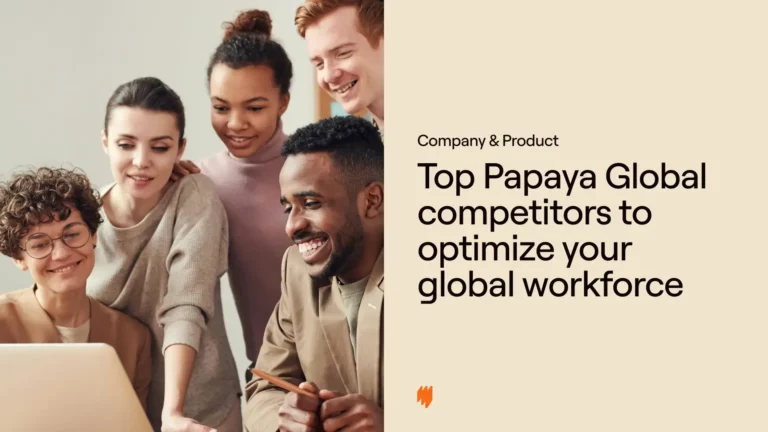One of the most rankling quotes that came out of the recently concluded Davos 2022 event was Kristalina Georgieva, Managing Director, International Monetary Fund reminding us all that Earth has been dealing with “unthinkable crisis after unthinkable crisis.”
In fact, the opening remarks of World Economic Forum (WEF) Founder and Chairman Klaus Schwab were: “The political, economic and social circumstances of our meeting are unprecedented.”
The grim outlook is not surprising given that the global economy has been through the mill, impacting companies and people around the world. But unprecedented circumstances require unprecedented measures, and the leaders at Davos were committed to finding solutions together.
In this article, we look at the key insights from Davos 2022 and why they matter.
The Impact on Labour Markets
“I’ll give you three words – talent, talent, talent. That’s what is the big differentiator today” said Canada’s Minister of Innovation, Science and Industry, François-Philippe Champagne, when asked about the biggest challenges in the labour markets today.
“The three biggest transformations are going to be the digitization of society, which is going to fuel a number of jobs; the zero-carbon society toward which we are going; and for Western economies, an ageing population.”
While the threats on the economic front are significant, the talent crunch poses a tougher challenge in the long term and is going to shape the way companies operate in the future. The pandemic accelerated some of those shifts, especially in the way companies and people work, but it also highlighted the disparities in wealth and responsibilities.
To help reduce this disparity, the forum called for more investment to bring women into the labour market and lift the economy. The WEF’s Jobs of Tomorrow report underlined the importance of services and jobs expanding with the global population to fill shortfalls and create new opportunities. Calling its report “a call to action to lead an ambitious, coordinated, multi-stakeholder approach,” it asked for a new wave of investments into three foundational social institutions: education, healthcare, and care.
“We need to create a much more flexible, hybrid work environment that has a lot more empathy, caring for people. Less direction and telling them what to do, more enabling them.”
François-Philippe Champagne, Canada’s Minister of Innovation, Science and Industry
For all three, science and technology is going to be one of the biggest drivers of change. Emerging technologies like Artificial Intelligence, Machine Learning, Quantum Computing, Cyber Security, and Automation will fuel the economy and open new windows of opportunity to the public. The need for education and the upskilling of an incumbent workforce become paramount in the backdrop of these new technologies.
Companies will also focus on adopting optimized and sustainable processes with a view on mitigating climate risks. This will give rise to a new wave of jobs within companies, with departments put in place to keep carbon emissions and sustainability best practices in place.
The jobs of the future will also shine a bright spotlight on social and employee well-being. Embracing alternate workforces – women, retired professionals, refugees, remote overseas professionals – can help meet the demands of the ever-expanding talent crunch and also welcome new talent into the fold. This will also enable flexibility and a combination of diversity and unique intellectualism.
The Future of Work
One of the key topics in this section was around the four-day work week, which, Hilary Cottam, Social Entrepreneur, Centre for the Fifth Social Revolution, said: “is a complete necessity for environmental, human well-being, and economic reasons.”
Cottam quoted the example of Kellogg’s, which in the 1930s experimented with six-hour shifts. This led to a significant increase in productivity and a sharp decline in accidents. The economics of the company changed for the better, but most importantly, the lives of the workers improved.
“One of the major things that could be impacted is the climate agenda. There is very good research that shows that if we work less, we don’t travel so much and we make less intensive consumer choices.”
Hilary Cottam, Social Entrepreneur, Centre for the Fifth Social Revolution
A lot of organizations are rethinking whether the typical five-day work week is counterproductive. Research has shown that there is a spike in productivity and employee happiness and a drop in oncosts when working four days a week.
Taking “Care” of Caregivers
Cottam offered an interesting alternative to the four-day work week. Terming it a male solution that did not take into account “care,” Cottam said workers would benefit more from a rethinking of the linear structure of work. Care, she said, happens around the day and not on particular days of the week, so revisiting how many hours people worked would enable a better work-life balance and allow more scope for taking care of families, building culture, and spending more time playing.
“We’re talking about having more time to be,” she summed up.
In the United States alone, the talent crunch stretches to more than 5 million positions, according to BCG. Hiring more workers in paid-care jobs could help ease the burden on the talent crunch. Alternatively, ensuring that current workers with unpaid-care responsibilities at home are given the flexibility to work from home or in more convenient shifts frees them to do their jobs in a less stressful environment.
Most unpaid-care providers now depend on a steadily reducing number of paid-care workers. More than before, unpaid-care workers return to their day jobs strained by their care responsibilities back at home.
“The burden of unpaid care work largely rests on the shoulders of women.”
Gabriela Bucher, Executive Director, Oxfam International
Concentrating on the care industry and targeting continuous improvement would help caregivers return to work and contribute more efficiently to their companies and as a result the economy.
A Holistic Approach for a Hybrid Future
A hybrid work system extends some of this flexibility back to the employee, but as Jonas Prising, Chairman and Chief Executive Officer, ManpowerGroup Inc. said, it is important to trust people with their choices regarding work.
“Being in a company is a team sport, so teams will have to decide how best to engage and connect. There’s no point coming to the office and then being on Zoom calls. You want to have time to collaborate,” said Prising.
For hybrid work, equitable decisions need to be made across all categories of workers to ensure that the benefits are spread out evenly. Right now, hybrid work may heavily tilt in favour of knowledge or internet workers, but those on the production lines and doing manual labour have been ignored.
The hybrid work model of the future should take into account all kinds of workers and not just where they will work from. It should look at how an individual wants to work and when he or she would like to be most active. The focus needs to be more on the task than on time. Ensuring this happens will mean there is no bifurcation of the workforce.
The importance of employee health and company values has also become more mainstream. The power struggle between employer and employee is in the balance with the current generation of workers wanting to see outcomes (not words and lofty promises) in company values, culture, and societal commitments.
The opinions on the future of work are diverse, and they should be given the diverse needs and outlook of the populace. But the baby steps of an important social revolution are underway and the sooner companies understand that, the better it will be for all.
The DEI Call to Action
“Our future is digital. If you’re not part of it, you’re out of it,” Administrator of the United Nations Development Programme Achim Steiner, told the Forum’s Meet the Leader Podcast.
While the statement itself might sound non-inclusive, the idea was to show how technology can really drive inclusion and help address multiple challenges.
But it’s not all roses and sunshine. As Katherine Bell, Editor-in-Chief, Quartz Media Inc. put it, “we’re moving forwards and backwards at the same time with regards to DEI.
Companies had made substantial progress and investors were taking societal issues and corrections more seriously. But the pandemic threw a spanner in the works and exacerbated divisions among countries and even the public. Vulnerable communities, economically weaker sections of the population, and minorities have been hit hard.
“Slavery has ended. Colonialism has ended. But the ideologies have remained. And we have to remove it”
Winnie Byanyima, Undersecretary-General of the United Nations
Bell added that the gender gap has now widened to a full generation while there are concerning issues in the LGBTQ+ and women’s rights space, too. The pandemic also meant that the racial equity movement saw an abrupt stop.
“In any institution such as ours,” said Peter T. Grauer, Chairman, Bloomberg LP, “you take a couple of steps forward and then take a couple of steps back due to external factors. D&I (Diversity and Inclusion) is evolutionary, not revolutionary. They are not going to happen overnight. We are in a race without a finish line, and this never stops.”
The biggest challenges remain the shift from talking about the ideas and making promises to taking useful action. Brands show great enthusiasm when talking about diversity and inclusivity, but still take soberingly inadequate real-world solutions to address the problems.
This begins with ensuring that the importance of diversity and inclusion is amplified and shared within the corners of every organization. Companies should educate their employees on understanding the individual responsibility each one has to contribute to the D&I cause and take it forward.
Companies have started to realize the potential that comes with having a workforce that is diverse. It helps bring together a combination of people, skills, culture, and intellectualism that is both unique and efficient. This helps them create unique opportunities and solutions for their clients and the world.
Opening up offices for talent from outside the country’s borders is a great way of balancing the demand and supply of talent while ensuring the values of diversity and inclusion are adhered to. Global employment is a panacea that is often overlooked because the regulations and restrictions on hiring may be tough to understand. But the growth of Employer of Record services makes it easy for companies to hire from anywhere in the world in a matter of minutes.
What Next?
From words to action, of course. More than 2000 leaders, innovators, and thinkers met at Davos committed to discussing problems that plague the world and the potential solutions that could help. And their ideas have given companies and individuals worldwide avenues to chip in and make the future brighter.
Earth has indeed been going through “unthinkable crisis after unthinkable crisis,” but nurturing D&I, pushing for a more balanced work culture, and opening up opportunities to people around the world can be a great starting step toward evening the scales.







